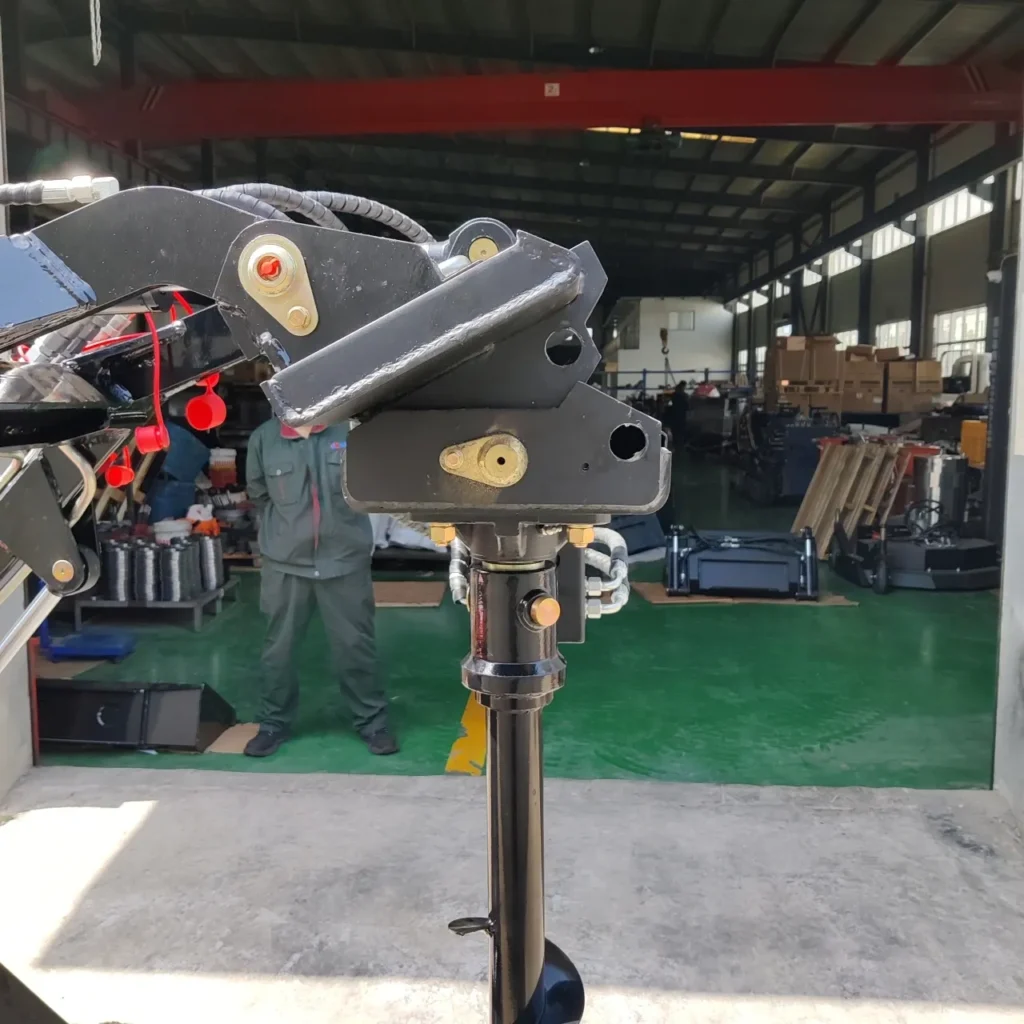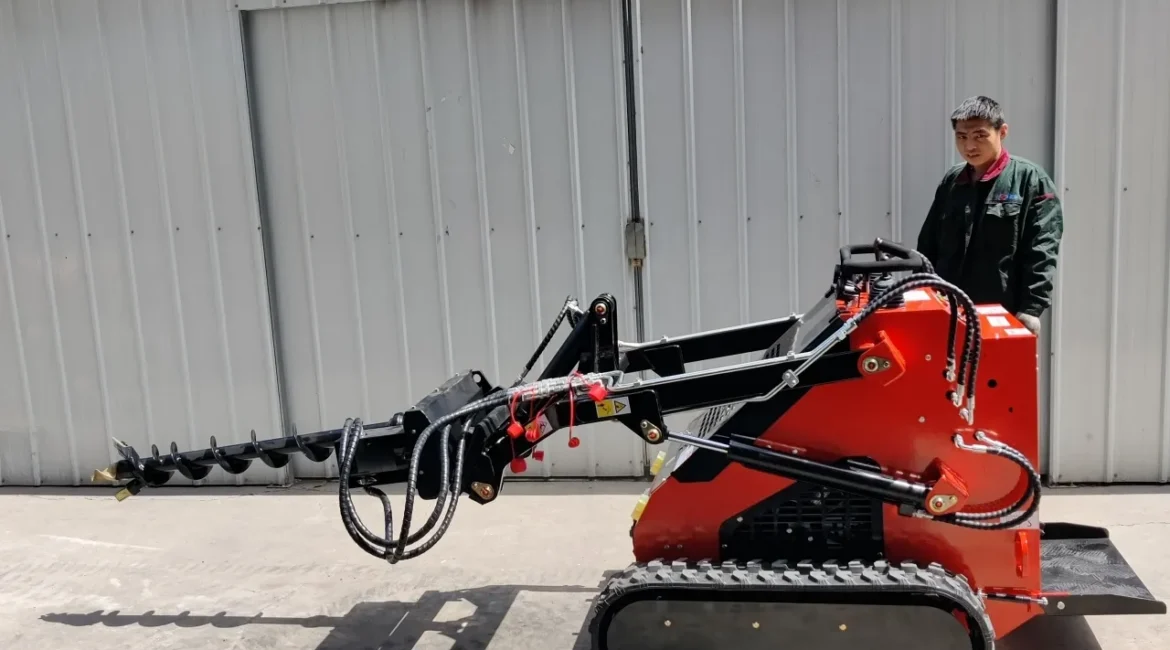Digging Deep: Unearthing the True Depth of Skid Steer Auger Drilling
Skid steer loaders are the chameleons of the construction and landscaping world—versatile, adaptable, and ready for almost any task you throw at them. One of their most powerful attachments? The skid steer auger. These earth-devouring tools are essential for everything from fence post installation to planting trees. But when it comes to skid steer augers, a crucial question always surfaces: How deep can you really drill?
This is a complex interaction involving machine power, ground conditions, and operator experience, not just about bit length. Let us uncover the facts and provide you the tools to improve your drilling capacity.
The Core Question: How Deep Can You Really Go?
The simple answer? It depends. Although manufacturers may advertise amazing maximum depths based only on auger length, the ground reality is significantly more complicated. Augers marketed as capability of drilling six feet deep or even more might be seen Still, reaching such depths regularly and effectively is something different.

Imagine yourself as if your feet are securely rooted on the earth, but you could theoretically stretch for the heavens. Similar real-world constraints bind the depth potential of your skid steer auger.
Unveiling the Depth Factors: It’s Not Just the Auger Length
We must go beyond just the auger bit’s physical length if we want to really know how far you can drill. Many important elements interact to greatly affect your attainable depth.
- Auger length and diameter: Heading 3: Specific Factor, Bullet Point: SEO Benefit – Obvious Starting Point
- Wider augers need more power. Even if brief, drilling with a high diameter auger requires considerable hydraulic force from your skid steer.
- Longer augers cover more distance, however… Although a longer auger theoretically may go deeper, it also strains the machine and increases resistance.
- Think about the capability of your skid steer: For best performance match the auger size and length to the hydraulic flow and horsepower of your skid steer. Don’t over-spec!
Skid Steer Power & Hydraulics: The Engine of Depth
- Hydraulic Flow is King: Particularly in deep soils or while running over obstacles, enough hydraulic flow is very essential for properly spinning the auger bit.
- Horsepower Concerns: Higher horsepower skid steers can handle more efficiently longer, bigger augers and typically show greater hydraulic performance.
- Match Machine to Task: While a larger, more powerful machine will have considerably more possibilities, a tiny skid steer might find it challenging to drive a massive, deep-drilling auger.
Soil Type & Ground Conditions: Mother Nature’s Wildcard
- Often easier and allows for deeper depths with less work is drilling in sand, loam, or topsoil.
- Dense, clays soils Significant resistance from hardpan, compacted soil, and clay restricts drilling depth and may cause the auger to stall.
- Rocks & Obstacles: The Depth Stoppers Running over rocks, roots, or concealed debris might either totally halt you or call for a lot of effort and agility.
- Moisture Levels Affect Everything: Extremely dry soil might be overly compressed; moist earth can become sticky and difficult to auger.
Operator Skill & Technique: The Human Element
- Consistent Downward Pressure: By use of continuous, controlled downward pressure, the auger bites into the ground efficiently without overloading the machine.
- Managing Soil Removal: Usually raising the auger to remove loose debris from the hole helps to prevent clogging and offers deeper penetration.
- “Wiggling” Technique: Use caution and avoid too strong power; gently swaying the auger side to side can help break up compacted dirt and pass tiny obstacles.
- Listening to Your Machine: Pay attention to the skid steer’s hydraulic system and engine while listening to your machine. Among the symptoms of too hard pressing are overheating and strain.
Auger Extensions: Your Depth Multiplier
- Extend Your Reach: Auger extensions let you progressively raise drilling depth beyond the basic auger length.
- Reduced Torque & Increased Strain: Particularly at deeper depths, extensions naturally lower torque at the bit and increase strain on the driving unit.
- Stability Concerns: Longer auger configurations may become less stable, especially in uneven ground or when running over resistance.
- Use Extensions Judiciously: Use extensions sparingly for certain deep hole needs; avoid depending too much on them for regularly deep drilling in difficult circumstances.
Beyond the Numbers: Practical Depth and Real-World Applications
With a long auger and perfect circumstances, theoretically you might reach amazing depths; however, what is the actual drilling depth you could practically anticipate in regular use?
Fencing & Posts: Typically Shallow & Efficient
- Depths of 2-4 feet are common: Common depths are between two and four feet. Skid steer augers shine in rapidly and effectively drilling to these depths for typical fence posts, mailbox posts, and such applications.
- Speed & Efficiency are Key: The skid steer auger excels in quickly producing many holes to constant shallow depths.
Planting Trees & Shrubs: Moderate Depth for Root Systems
- Depths of 3-5 feet are achievable: One may reach depths between three and five feet. Deeper holes are needed for bigger plants and bushes to allow root balls. Many times, skid steer augers can efficiently manage these depths.
- Soil Type Matters More: At these modest depths, soil type becomes increasingly important. Compaction of the soil and the presence of rocks start to influence things.
Footings & Foundations: Deeper Drilling with Considerations
- Depth of 4–8 feet achievable, but difficult: Skid steer augers can drill farther for certain minor footings and foundations. This is where, however, restrictions become really clear.
- Ground Conditions Critical: Designed only for somewhat loose, rock-free soils.
- Alternative Methods May Be Better: Dedicated drilling rigs or excavators with specific auger attachments are usually more efficient and dependable for deeper and more demanding foundation work.
Pushing the Limits (Safely & Effectively): Tips for Maximum Depth
Want to maximize your drilling depth with a skid steer auger? Here are some pro tips:
- Start Small, Go Deeper Gradually: Begin drilling with a shorter auger or extension to establish the hole and break up the surface, then gradually increase depth as needed. (Bullet Point – Actionable Tip)
- Match Auger to Skid Steer Power: Don’t overload your machine. Choose an auger size and length appropriate for your skid steer’s hydraulic capacity. (Bullet Point – Actionable Tip)
- Manage Soil Removal Effectively: Periodically lift the auger to clear loose soil from the hole. This reduces resistance and prevents the auger from getting bogged down. (Bullet Point – Actionable Tip)
- Consider Pilot Holes (for tough conditions): In very hard or compacted soil, drilling a smaller diameter pilot hole first can make it easier for the larger auger to follow. (Bullet Point – Actionable Tip)
- Prioritize Safety ALWAYS: Be aware of underground utilities, wear appropriate safety gear, and never exceed the safe operating limits of your skid steer and auger. (Bullet Point – Actionable Tip)
The Bottom Line: Depth is Relative, Versatility is Key
So, how deep can you drill with a skid steer auger? The honest answer is: deep enough for a vast range of tasks! While reaching extreme depths might be impractical or inefficient in many situations, the skid steer auger’s true strength lies in its versatility and efficiency at drilling holes for a wide array of common applications.
Focus on understanding the factors that influence drilling depth, match your equipment to the task, and employ smart operating techniques. By doing so, you can unlock the full potential of your skid steer auger and tackle countless digging projects with speed and precision. And remember, sometimes “deep enough” is exactly perfect for the job at hand!
What are your experiences with skid steer auger depths? Share your tips and challenges in the comments below!

